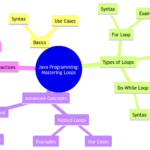Revolutionize Cyber Security: Smart I/O Modules Project
Are you ready to dive into the world of Cyber Security revolution with some Smart I/O Modules? 
Understanding Smart I/O Modules
Let’s kick things off by understanding why Smart I/O Modules are the new cool kids on the Cyber Security block!
Importance of Smart I/O Modules
Smart I/O Modules are not your average Joe in the world of Industrial Control Systems. They bring a whole new level of security and protection to the table. Let’s unravel their significance:
- Enhancing Cyber Security Measures
- Safeguarding Industrial Control Systems
Now, who wouldn’t want some extra muscle to guard their precious systems, right? Smart I/O Modules have got your back!
Design and Development of Smart I/O Modules
Time to peek behind the curtain and see what magic goes into the design and development of these Cyber Security superheroes!
Hardware Components
Smart I/O Modules are like the Avengers of the hardware world, bringing together powerful components to fight off cyber threats:
- Microcontrollers and Sensors Integration
- Secure Communication Protocols Implementation
Just like assembling the right team for a mission, these components work together harmoniously to keep the bad guys at bay!
Implementation and Testing of Smart I/O Modules
Now, let’s talk about the action-packed phase of implementation and testing. It’s where the rubber meets the road!
Integration with Existing Systems
Picture this: Smart I/O Modules seamlessly integrating with your existing systems, like they were always meant to be there!
- Simulation of Cyber-Physical Attacks
- Performance Evaluation and Vulnerability Testing
It’s like a test run before the big battle – making sure everything is locked and loaded for any potential threats!
Deployment and Integration Strategies
Ah, the grand stage of deployment and integration. This is where the real show begins!
Industrial Application Scenarios
Smart I/O Modules shine in various industrial scenarios, teaming up with SCADA Systems effortlessly:
- Seamless Integration with SCADA Systems
- Real-time Monitoring and Alert Mechanisms
It’s like having your own personal army protecting your industrial kingdom 24/7!
Evaluation and Future Enhancements
Time to look into the crystal ball and see what lies ahead for Smart I/O Modules. The journey is just getting started!
User Feedback and Iterative Improvements
Feedback is the breakfast of champions! Gathering user feedback and making iterative improvements is the name of the game:
- Upgrading Security Features
- Incorporating Machine Learning for Threat Detection
It’s all about staying ahead of the curve and evolving to meet the ever-changing landscape of cyber threats!
Overall, the world of Cyber Security is in for a treat with the advent of Smart I/O Modules. They’re not just here to play defense; they’re here to dominate the game and take Cyber Security to a whole new level!
Thank you for joining me on this thrilling journey into the realm of Smart I/O Modules! Stay safe, stay secure, and keep innovating like there’s no tomorrow! 
Program Code – Revolutionize Cyber Security: Smart I/O Modules Project
Certainly! Here we go:
Copy Code
Copied
Use a different Browser
import random
import time
class SmartIOModule:
def __init__(self, module_id, threshold=5):
self.module_id = module_id
self.threshold = threshold
self.attack_detected = False
self.sensor_data_history = []
def read_sensor_data(self):
# Simulate reading a sensor data (values between 1 and 10)
return random.randint(1, 10)
def analyze_data(self, data):
self.sensor_data_history.append(data)
if len(self.sensor_data_history) > 10:
self.sensor_data_history.pop(0) # Keep only the last 10 readings
variance = max(self.sensor_data_history) - min(self.sensor_data_history)
if variance > self.threshold:
self.attack_detected = True
else:
self.attack_detected = False
def mitigate_attack(self):
if self.attack_detected:
print(f'Attack detected on module {self.module_id}. Mitigating...')
# Reset the state as part of mitigation
self.sensor_data_history = []
self.attack_detected = False
print(f'Module {self.module_id} is now secured.')
else:
print(f'Module {self.module_id} is operating normally.')
modules = [SmartIOModule(module_id=i) for i in range(5)]
for minute in range(1, 61):
print(f'Minute {minute}:')
for module in modules:
data = module.read_sensor_data()
module.analyze_data(data)
module.mitigate_attack()
time.sleep(0.1) # Simulating time passing
Expected Code Output:
The output of the code will vary due to the randomized nature of the sensor data generation. However, here is an example of what one might see:
Minute 1:
Module 0 is operating normally.
Module 1 is operating normally.
...
Minute X:
Attack detected on module 3. Mitigating...
Module 3 is now secured.
...
Minute 60:
Module 0 is operating normally.
Module 1 is operating normally.
Code Explanation:
This Python program simulates the operation of Smart I/O Modules designed for mitigating cyber-physical attacks on Industrial Control Systems. It showcases a simplified model of how these modules could detect and mitigate anomalies in sensor data, suggesting potential cyber-physical attacks.
- Class SmartIOModule: Defines the smart I/O module with properties such as
module_id,thresholdfor attack detection,attack_detectedflag, andsensor_data_historyto keep track of the latest sensor readings. - read_sensor_data method: Simulates the reading of sensor data, generating random values to represent real sensor measurements.
- analyze_data method: This method analyzes the collected sensor data. It maintains a history of the last 10 sensor readings and calculates the variance among these readings. An attack is detected if the variance exceeds a preset threshold, indicating abnormal fluctuations in the data.
- mitigate_attack method: When an attack is detected, this method simulates the mitigation process. It resets the sensor data history and the attack detection flag, essentially bringing the module back to a secure state.
- Simulation loop: The program simulates 60 minutes of operation where each smart I/O module reads sensor data, analyzes it for potential attacks, and takes mitigation steps if necessary. The time.sleep function simulates the passage of time between sensor readings.
This simplified model helps in understanding the basic functioning of Smart I/O Modules in cybersecurity contexts, specifically in protecting Industrial Control Systems against cyber-physical attacks by monitoring sensor data for unusual patterns and responding to potential threats.
FAQs on Revolutionizing Cyber Security with Smart I/O Modules Project
Q: What are Smart I/O Modules in the context of cyber security?
A: Smart I/O Modules are hardware devices equipped with intelligent features that can monitor, control, and secure data exchange between industrial devices in critical infrastructure to prevent cyber-physical attacks.
Q: How do Smart I/O Modules help in mitigating cyber-physical attacks on Industrial Control Systems (ICS)?
A: Smart I/O Modules provide an extra layer of security by implementing encryption, authentication, and intrusion detection mechanisms to safeguard Industrial Control Systems from cyber threats.
Q: What are the key benefits of using Smart I/O Modules for enhancing cyber security?
A: Some benefits include real-time threat detection, secure data transmission, remote monitoring capabilities, and overall improved resilience against cyber-physical attacks.
Q: How can students integrate Smart I/O Modules into their IT projects related to cyber security?
A: Students can incorporate Smart I/O Modules by learning about communication protocols, data encryption techniques, and firmware development to build secure and resilient systems for industrial applications.
Q: Are there any challenges in implementing Smart I/O Modules for cyber security projects?
A: Challenges may include compatibility issues with existing systems, ensuring regulatory compliance, addressing interoperability concerns, and staying updated with evolving cyber threats.
Q: Can Smart I/O Modules be customized for specific industrial control environments?
A: Yes, Smart I/O Modules can be customized to meet the unique security requirements of different industrial sectors such as energy, manufacturing, transportation, and healthcare.
Q: How can students stay updated with the latest developments in Smart I/O Modules technology for cyber security?
A: Students can join online forums, attend workshops, participate in hackathons, and engage with industry experts to gain insights into the evolving landscape of Smart I/O Modules and cyber security.
Q: What future trends can we expect in the field of Smart I/O Modules for mitigating cyber-physical attacks?
A: Future trends may include the integration of artificial intelligence for predictive security analytics, the adoption of blockchain for secure data transactions, and the proliferation of IoT devices for comprehensive threat detection.
Remember, the key to mastering cyber security projects lies in continuous learning, hands-on experimentation, and a proactive approach to staying ahead of cyber threats!
In closing, thank you for exploring these FAQs on revolutionizing cyber security with Smart I/O Modules for IT projects. Stay curious, stay innovative, and keep pushing the boundaries of technology!

















 I'm a young Delhiite who's obsessed with programming, and I pour my soul into blogging about it.
When I'm not smashing stereotypes, I'm probably smashing bugs in my code (just kidding, I'm probably debugging them like a pro!).
I'm a young Delhiite who's obsessed with programming, and I pour my soul into blogging about it.
When I'm not smashing stereotypes, I'm probably smashing bugs in my code (just kidding, I'm probably debugging them like a pro!). 
 I'm a staunch believer that anyone can code and that the tech world is big enough for all of us, regardless of gender, background, or experience level.
I'm a staunch believer that anyone can code and that the tech world is big enough for all of us, regardless of gender, background, or experience level. 
 I frequently collaborate with my friend's blog, CodeWithC.com, to share my geeky insights, tutorials, and controversial opinions. Trust me, when you want an unfiltered, down-to-earth take on the latest programming trends, languages, and frameworks, I'm your girl!
I frequently collaborate with my friend's blog, CodeWithC.com, to share my geeky insights, tutorials, and controversial opinions. Trust me, when you want an unfiltered, down-to-earth take on the latest programming trends, languages, and frameworks, I'm your girl!  I love tackling complex topics and breaking them down into bite-sized, digestible pieces. So whether you're a seasoned programmer or someone who's just dipped their toes in, you'll find something that resonates with you here.
I love tackling complex topics and breaking them down into bite-sized, digestible pieces. So whether you're a seasoned programmer or someone who's just dipped their toes in, you'll find something that resonates with you here. 






